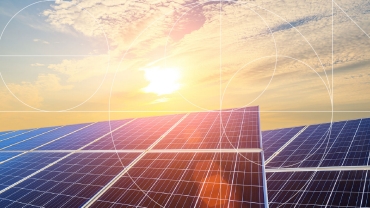
The Inflation Reduction Act (IRA) is the latest lever energy and utilities can pull to potentially speed up the pace of the cleaner energy transition. Nearly $370 billion in available tax credits, incentives and other financing could help to accelerate your investments in renewables, hydrogen, fleet electrification, adoption of technologies like carbon capture and storage, reduction of emissions or the exploration of new lines of business and partnerships. Beyond furthering your decarbonization efforts, the act’s funding mechanisms, which include a 15% book-income alternative minimum tax (BMT) on corporate profits for the nation’s largest companies and larger excise taxes, could profoundly affect the cost of doing business for energy and utility companies.
The potential impacts reach across C-suite focus areas and touch many parts of the business, including capital projects, new technology and product development, shareholder returns, revenue and rates for regulated companies, supply chain and workforce. It is important for leaders to align on an approach to the IRA, while considering it within the context of other grants and incentives available for clean energy and related investments, such as the Infrastructure Investment and Jobs Act and CHIPS Act. The strategic decisions made while planning for 2023 could have lasting impacts and result in taking big steps forward in the energy transition.
The Inflation Reduction Act may help to spur the industry’s advancement of cleaner energy with the greatest acceleration likely coming from energy and utilities’ strategic reinventors.
Leading the momentum to cleaner energy
The industry’s strategic reinventors can help to amplify today’s progress by seizing the opportunity to further develop or commercialize solutions related to clean energy. Momentum is also likely from those who have already placed big bets on the energy transition. As an example, those who moved early on the research and development of hydrogen now have the green light to keep the momentum going, thanks to the act’s 10-year production tax credit for clean hydrogen.
Over the long run, the IRA may encourage a flood of deal activity and investor interest in areas such as carbon capture, a technology that may be less expensive and more attractive because of tax credits. Likewise, a provision that allows for the transfer of credits to another entity may lead to an uptick in companies forming new partnerships, seeking joint ventures or exploring new markets to expand or evolve their portfolio.
The IRA and 2023 C-suite planning: What should energy and utilities leaders do next?
The most strategic and proactive leaders will likely connect the dots between the provisions available to energy and utility companies under IRA, other available funding and their own enterprise-wide sustainability and growth goals. Here, we highlight some of the key provisions of the IRA by C-suite focus area. But, you might find it valuable to view all business focus areas, as the insights might help inform your cross-enterprise thinking.
Connecting the dots across your cleaner energy journey
Because of the potential implications across your company, it’s important for leaders to align on a holistic strategy that can cover the entire enterprise — from finance, tax and deals to operations, supply chain, risk and more. The collaboration could help your company further shape its cleaner energy future.
We’ve seen acceleration like this happen within the industry before — like when stimulus funding following the 2008-2009 financial crisis helped to spur the rollout of millions of smart meters for utilities. Notably, impacts from the IRA could be broader and deeper across many aspects of the energy, utilities and resources value stream.












